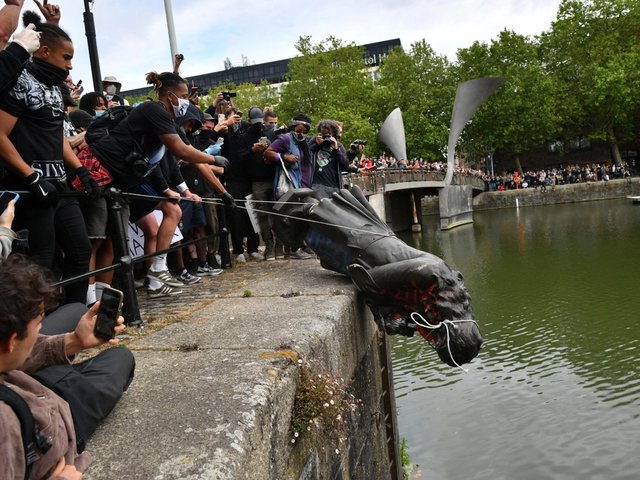The statue of the slave trader Edward Colston, which was toppled from its plinth in Bristol, UK, and thrown into the harbour by protestors in 2020, will now permanently go on display at the city’s M Shed museum after a decision by city councillors.
The council’s planning committee also removed the statue’s Grade II listing as part of the process for making it part of the museum’s collection. The statue was put on display briefly in 2021 but has been in storage for the past two years.
At the planning meeting on Wednesday, Conservative councillor Chris Windows said he was opposed to the “unfair decision” of housing the statue in a museum to be “kept safe”. He said: “The correct place for the statue is on its original plinth.”
But according to a city-wide survey by the We Are Bristol History Commission, 80% of respondents were supportive of the statue going on display at M Shed.
The commission’s chair, professor Tim Cole of Bristol University, welcomed the decision: “I was pleased to see that the planning committee approved the officer's report recommending that the statue enter permanently into the museum collection. Museum display emerged overwhelmingly in the conversation we—as a history commission—had with the city in 2021 as the most appropriate site for this contested and complex object.
“Most in the city felt that the statue was of historical significance, all the more since it was toppled, and the long history of when and why it was put up and taken down requires the space museum display—rather than a short plaque—offers. For most in the city, it was important that the statue be displayed in its fallen and graffitied state given that this is a critical part of its recent history, and also that people in the city could choose whether or not they wished to see it again. Placing the statue in the museum allows this to be achieved.”
The empty plinth retains its Grade II listed status and plans are being developed to mount a plaque explaining the history of the site. The wording of the plaque will be discussed at the planning committee’s next meeting in April, which will be after the statue is due to go on display.
The bronze statue, erected in 1895 to commemorate Colston‘s philanthropy and given listed status in 1977, was toppled by Black Lives Matter protestors following the murder of George Floyd by the former Minneapolis police officer Derek Chauvin.
Andrea Potts, a researcher into how contemporary museum exhibitions represent European colonialism at the University of Brighton's Centre for Design History, said: “Putting an object in a museum is not a neutral act. It ascribes value to that object. It's important to remember that the value of the Colston statue is the fact that it was pulled down by anti-racist activists. This is an opportunity to display the statue in a way that centres Bristol’s long history of activism, and it's good to hear that the statue will soon be part of an exhibition about protest.”





